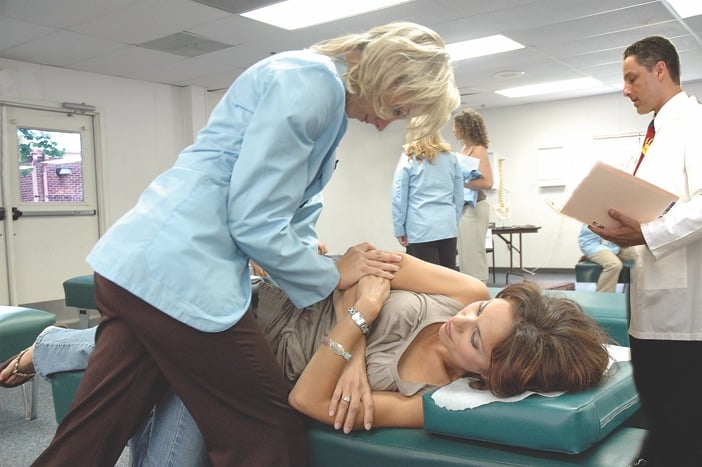Overview
Life University Chiropractic Clinics, in striving to continually improve clinical education and the quality of patient care, acknowledge the change occurring in the current practice of chiropractic and the need to modernize delivery methods of clinical education and clinic operations. To address these changes, a revision of clinical education is being developed; a hubclinic model is being created wherein each intern will be assigned in a faculty/clinician-based mentorship and be expected to have direct involvement in a variety and range of chiropractic focused clinical and business experiences. Within this development, modifications from the current clinical and operational approach will be based on a model that is clinician driven, focused on patient centered care, and creates an environment to train interns for entry level, real world chiropractic practice.
All students preparing to be a Doctor of Chiropractic will be exposed to a variety and range of case types and several different health care environments during their educational experience to be able to perform as primary health care clinicians upon graduation. They will also gain knowledge and experience by being exposed to a variety of chiropractic approaches during multi levels of clinical education. These integrated experiences will be scheduled and coordinated throughout the entire curriculum with lecture, small group discussion, laboratory courses, observation and participation in patient care at appropriate levels and/or direct delivery of chiropractic care.
Each level of clinical education will focus on the education of developing students to enter chiropractic practice to become primary health care clinicians which includes the correlation of chiropractic philosophy with the practical application of chiropractic and the integration of science with the continual development of chiropractic technique skills in delivering chiropractic care. During all levels, it is important that the developing student display professional behavior, effective communication skills, and acknowledge the importance of lifetime chiropractic care consistent with the three phases of care and the Life clinic model. The student will also acknowledge, identify and display the skills to perform pre and post patient examinations and be able to identify and communicate the ramifications of the vertebral subluxation through a structured patient education program.
Clinic HUB Design
Hub clinics will be located where there is easy patient access and be small enough to be able to respond quickly to the marketplace and include provisions for third party carriers such as Medicare, personal injury, workers compensation cases, and exposure to managed care models. The hub clinic model will also allow expansion as necessary to accommodate any fluctuations in student enrollment.
The model for the hub clinic is structured such that each ‘hub” will function similar to a solo practice or one with several small practices set up in a larger facility. The number of ‘units’ in each facility will depend on the size of the facility. When developed, there will be a central billing department that will handle all billing and follow-up issues for all Hub clinics, no matter where they are located.
All procedures, including examinations, x-rays, and adjustments, are scheduled with the faculty/clinician in the given hubclinic. As student interns graduate, or enter into one of the PEAK programs, the faculty/clinician will assign, or transfer, the patient to one of their other student interns.
The faculty/clinician’s work area in the hub clinic is set up in units, each consisting of approximately four adjusting rooms, an exam room, a consultation/patient education room and a faculty/clinician office/work area. Front desk staffing and other support staff will be trained to facilitate patient scheduling, rescheduling, participation in patient education, and overall assist and ensure smooth patient flow.
Dr. Tim Gross, Vice President of Academic Affairs commented on the new training model for clinical education; “By creating a faculty/clinician-based mentor model with a multi-level approach to clinical education, the infrastructure will allow for a more integrated approach to patient care, an enhanced learning environment for interns, and a more structured approach for attaining increasing levels of intern responsibility in the delivery of chiropractic care and patient management.


Social Media